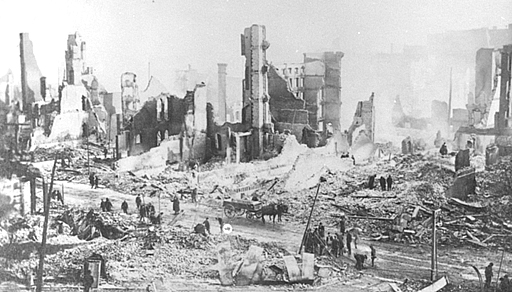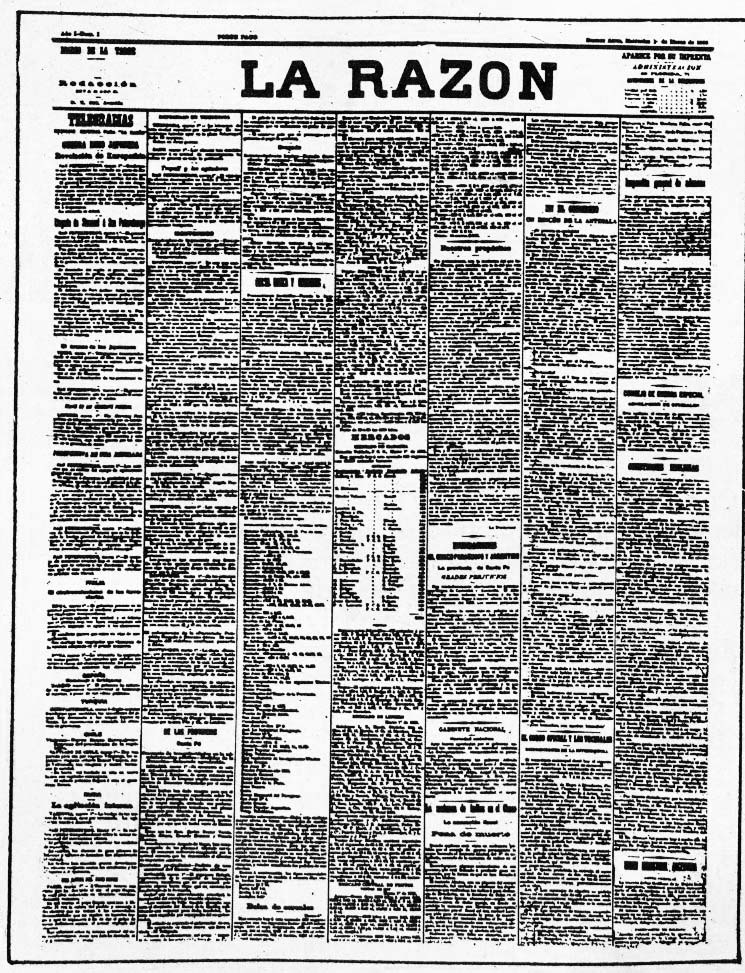|
Francisco López Merino
Francisco López Merino (June 6, 1904 - May 22, 1928) was an Argentine poet born in La Plata, Buenos Aires Province, Buenos Aires, who committed suicide at the age of 23. In 1920 he published ''Horas de amor'' (''Love Hours''), a group of nine poems that later fell victims of auto-censorship. In 1921 he wrote another collection of poems entitled ''Fragmentos de un libro inconcluso'' (''Fragments of an Unfinished Book''), divided in three sections: "El espejo de mi interior" ("Mi Inner Mirror"), "Del eterno femenino" ("Of the Eternal Feminine") and "Cantos" ("Chants"). These compositions were never published. The poem "El alma se me llena de estrellas..." ("My Soul Is Fulfilled By Stars...") was already present in this group of texts and was later included in his book ''Tono menor'' (''Minor Tone'') (1923). López Merino published his poetry in different national newspapers and magazines, principally in ''El Día (La Plata), El Día'' and ''El Argentino'' of La Plata, the magazine ... [...More Info...] [...Related Items...] OR: [Wikipedia] [Google] [Baidu] |
La Plata
La Plata () is the capital city of Buenos Aires province, Argentina. According to the 2022 Argentina census, census, the La Plata Partido, Partido has a population of 772,618 and its metropolitan area, the Greater La Plata, has 938,287 inhabitants. It is located 9 kilometers (6 miles) inland from the southern shore of the estuary. La Plata was planned and developed to serve as the provincial capital after the city of Buenos Aires was Federalization of Buenos Aires, federalized in 1880. It was officially founded by Governor Dardo Rocha on 19 November 1882. Its construction is fully documented in photographs by Tomás Bradley Sutton. La Plata was briefly known as ''Ciudad Eva Perón'' (Eva Perón City) between 1952 and 1955. History and description After La Plata was designated the provincial capital, Rocha was placed in charge of creating the city. He hired urban planner Pedro Benoit, who designed a city layout based on a rationalism, rationalist urban planning, conception ... [...More Info...] [...Related Items...] OR: [Wikipedia] [Google] [Baidu] |
La Prensa (Buenos Aires)
''La Prensa'' is an Argentine daily newspaper. Based in Buenos Aires, it was founded by José C. Paz and ranked among the most widely circulated dailies in subsequent decades, earning a reputation for conservatism and support for British interests. History Following the election of populist leader Juan Perón, ''La Prensa'' declined due to both competition from new dailies (notably '' Clarín''), as well a to government pressure. This latter development culminated in the paper's April 1951 seizure by the state, and its sale to the CGT labor union. ''La Prensa'' was returned to the Gainza Paz family by the succeeding regime in 1956, though its readership never regained its pre-1951 levels. Ultimately, the company sold its landmark Avenida de Mayo May Avenue () is an avenue in Buenos Aires, capital of Argentina. It connects the Plaza de Mayo with Congressional Plaza, and extends in a west–east direction before merging into Rivadavia Avenue. History and overview Built ... [...More Info...] [...Related Items...] OR: [Wikipedia] [Google] [Baidu] |
Argentine Male Poets
Argentines, Argentinians or Argentineans are people from Argentina. This connection may be residential, legal, historical, or cultural. For most Argentines, several (or all) of these connections exist and are collectively the source of their being Argentine. Argentina is a multiethnic society, multiethnic society, home to people of various Ethnicity, ethnic, Race (human categorization), racial, Religion, religious, Religious denomination, denomination, and Nationality, national origins, with the majority of the population made up of Old World immigrants and their descendants. As a result, Argentines do not equate their nationality with ethnicity, but with citizenship and allegiance to Argentina. Aside from the indigenous population, nearly all Argentines or their ancestors immigrated within the past five centuries. Among countries in the world that have received the most immigrants in modern history, Argentina, with 6.6 million, ranks second to the United States (27 million), ... [...More Info...] [...Related Items...] OR: [Wikipedia] [Google] [Baidu] |
People From La Plata
The term "the people" refers to the public or common mass of people of a polity. As such it is a concept of human rights law, international law as well as constitutional law, particularly used for claims of popular sovereignty. In contrast, a people is any plurality of persons considered as a whole. Used in politics and law, the term "a people" refers to the collective or community of an ethnic group or nation. Concepts Legal Chapter One, Article One of the Charter of the United Nations states that "peoples" have the right to self-determination. Though the mere status as peoples and the right to self-determination, as for example in the case of Indigenous peoples (''peoples'', as in all groups of indigenous people, not merely all indigenous persons as in ''indigenous people''), does not automatically provide for independent sovereignty and therefore secession. Indeed, judge Ivor Jennings identified the inherent problems in the right of "peoples" to self-determination, as i ... [...More Info...] [...Related Items...] OR: [Wikipedia] [Google] [Baidu] |
1928 Deaths
Events January * January – British bacteriologist Frederick Griffith reports the results of Griffith's experiment, indirectly demonstrating that DNA is the genetic material. * January 1 – Eastern Bloc emigration and defection: Boris Bazhanov, Joseph Stalin's personal secretary, crosses the border to Iran to defect from the Soviet Union. * January 17 – The OGPU arrests Leon Trotsky in Moscow; he assumes a status of passive resistance and is exiled with his family. * January 26 – The volcanic island Anak Krakatau appears. February * February – The Ford River Rouge Complex at Dearborn, Michigan, an automobile plant begun in 1917, is completed as the world's largest integrated factory. * February 8 – Scottish-born inventor John Logie Baird broadcasts a transatlantic television signal from London to Hartsdale, New York. * February 11 – February 19, 19 – The 1928 Winter Olympics are held in St. Moritz, Switzerland, the first as a separate event. Sonja Henie of ... [...More Info...] [...Related Items...] OR: [Wikipedia] [Google] [Baidu] |
1904 Births
Events January * January 7 – The distress signal ''CQD'' is established, only to be replaced 2 years later by ''SOS''. * January 8 – The Blackstone Library is dedicated, marking the beginning of the Chicago Public Library system. * January 12 – The Herero Wars in German South West Africa begin. * January 17 – Anton Chekhov's last play, ''The Cherry Orchard'' («Вишнëвый сад», ''Vishnevyi sad''), opens at the Moscow Art Theatre directed by Constantin Stanislavski, 6 month's before the author's death. * January 23 – The Ålesund fire destroys most buildings in the town of Ålesund, Norway, leaving about 10,000 people without shelter. * January 25 – Halford Mackinder presents a paper on "The Geographical Pivot of History" to the Royal Geographical Society of London in which he formulates the Heartland Theory, originating the study of geopolitics. February * February 7 – The Great Baltimore Fire in Baltimore, Maryland, destroys over 1,500 build ... [...More Info...] [...Related Items...] OR: [Wikipedia] [Google] [Baidu] |
Jorge Luis Borges
Jorge Francisco Isidoro Luis Borges Acevedo ( ; ; 24 August 1899 – 14 June 1986) was an Argentine short-story writer, essayist, poet and translator regarded as a key figure in Spanish literature, Spanish-language and international literature. His best-known works, () and (), published in the 1940s, are collections of short stories exploring motifs such as dreams, labyrinths, Indeterminism, chance, infinity, archives, mirrors, fictional writers and mythology. Borges's works have contributed to philosophical literature and the fantasy genre, and have had a major influence on the magical realism, magical realist movement in 20th century Latin American literature.Theo L. D'Haen (1995) "Magical Realism and Postmodernism: Decentering Privileged Centers", in: Louis P. Zamora and Wendy B. Faris, ''Magical Realism: Theory, History and Community''. Duhan and London, Duke University Press, pp. 191–208. Born in Buenos Aires, Borges later moved with his family to Switzerland in 1914, ... [...More Info...] [...Related Items...] OR: [Wikipedia] [Google] [Baidu] |
La Razón (Buenos Aires)
''La Razón'' was a local newspaper distributed in the public transport in Buenos Aires, Argentina. History It was founded in 1905 by Argentine journalist Emilio Morales as an afternoon (''Quinta edición'') and evening (''Sexta edición'') newspaper in broadsheet format. The daily was acquired by a prominent news editor, José A. Cortejarena, in 1911 and became the first newspaper in Argentina owned by a journalist. Cortejarena died in 1921, and the paper was directed by Ángel L. Sojo, during whose tenure ''La Razón'' became known for scooping the city's numerous other papers. The daily also became the first to publish cartoonist Dante Quinterno's ''Patoruzú'' (an enduring Argentine comic strip) in 1928. ''La Razón'' was acquired by Ricardo Peralta Ramos, the scion of the founding family of seaside Mar del Plata, in 1939. Peralta Ramos named Félix Laiño director, and the paper's broadsheet layout was reformatted and more heavily illustrated. The paper grew steadily, ... [...More Info...] [...Related Items...] OR: [Wikipedia] [Google] [Baidu] |
La Nación
''La Nación'' () is an Argentine daily newspaper. As the country's leading conservative newspaper, ''La Nación''s main competitor is the more liberal ''Clarín (Argentine newspaper), Clarín''. It is regarded as a newspaper of record for Argentina. Its motto is: "''La Nación'' will be a tribune of doctrine." It is the second most read newspaper in print, behind ''Clarín'', and the third in digital format, behind ''Infobae'' and ''Clarín''. In addition, it has an application for Android (operating system), Android and iOS phones. The newspaper's printing plant is in the City of Buenos Aires and its newsroom is in Vicente López, Buenos Aires, Vicente López, Province of Buenos Aires. The newsroom also acts as a studio for the newspaper's TV channel, La Nación +, LN+. Overview The paper was founded on 4 January 1870 (replacing the former publication ''Nación Argentina''), by former Argentine President Bartolomé Mitre and associates. Until 1914, the managing editor was Jo ... [...More Info...] [...Related Items...] OR: [Wikipedia] [Google] [Baidu] |




